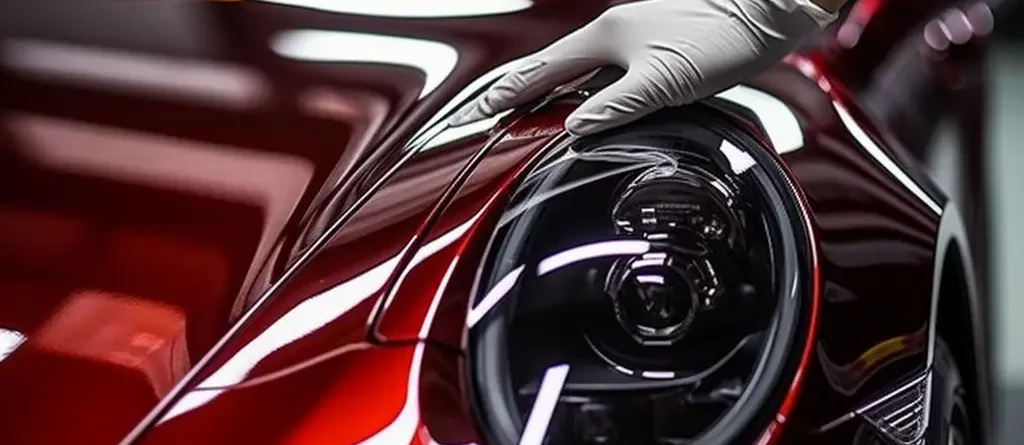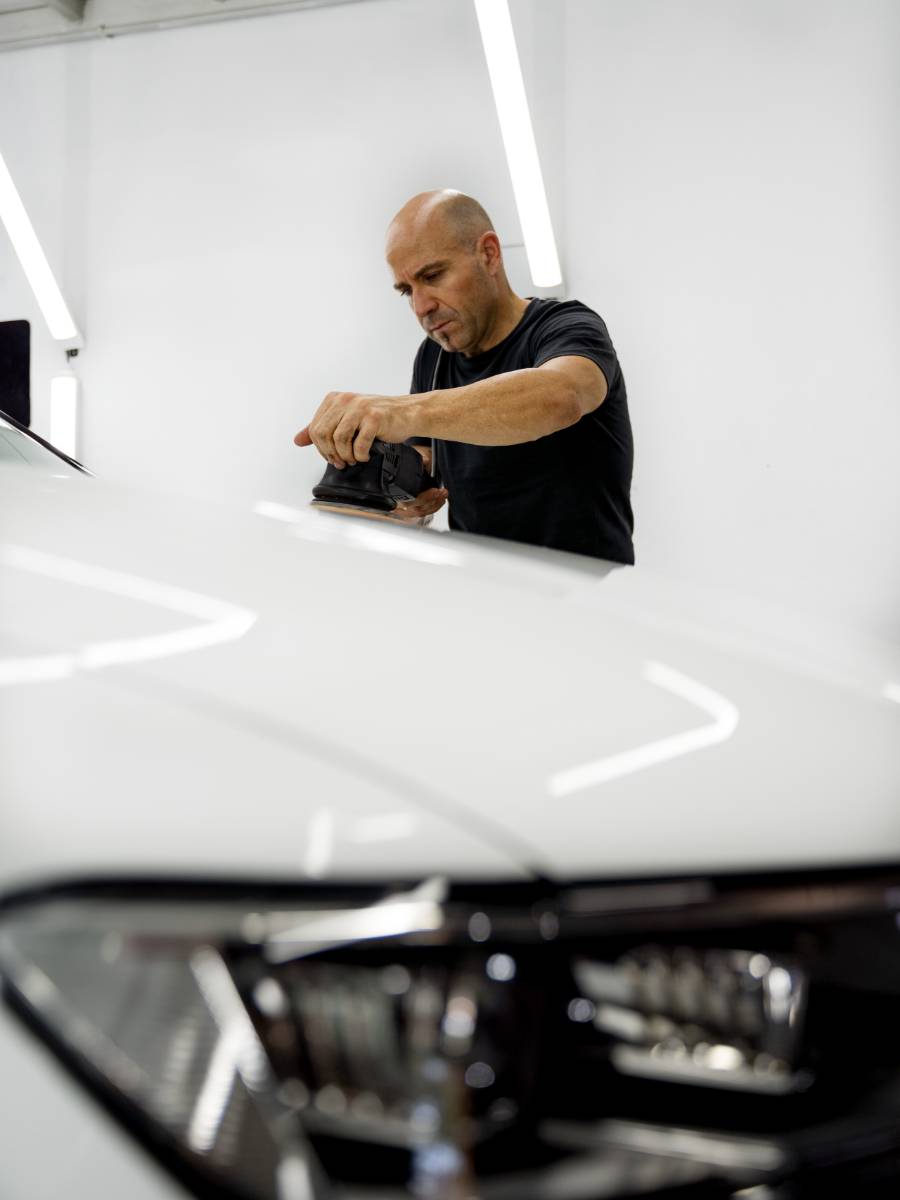Protect Your Car from the Elements with Ceramic Coating Technology
Protect Your Car from the Elements with Ceramic Coating Technology
Blog Article
Ceramic Finishing vs. Traditional Wax: Which Gives Much Better Long-Term Defense?
The dispute between ceramic finishes and conventional wax for automobile protection has actually amassed substantial attention amongst automobile lovers and specialists alike. While both serve the purpose of safeguarding paint, their distinctions in sturdiness, application, and long-term maintenance prices might affect a customer's option. Ceramic finishes flaunt remarkable long life and resistance to environmental elements, yet the complexity of their application questions about ease of access and practicality. As we explore these contrasting choices, it ends up being vital to think about not just the instant advantages but also the implications for car treatment gradually.
Review of Ceramic Coating
Ceramic layer has actually acquired considerable appeal among auto lovers and detailers alike as a result of its innovative safety qualities. This ingenious technology is created to develop a sturdy, hydrophobic shield over a lorry's paint surface, significantly improving its resistance to environmental pollutants such as dust, UV rays, and chemical stains. Unlike typical wax, which gives a short-lived layer of defense, ceramic finishes bond at a molecular level with the paint, offering durable longevity-- commonly expanding beyond two years with proper maintenance.
The application process includes careful preparation of the vehicle's surface, consisting of cleansing and brightening to ensure optimal attachment. Once used, the finishing treatments to create a robust layer that not just includes deepness and gloss to the paint yet also simplifies upkeep. With its hydrophobic buildings, ceramic layer permits water and dirt to slide off even more easily, minimizing the regularity of laundries and minimizing the threat of swirl marks.
Additionally, ceramic layers are available in numerous solutions, enabling individuals to pick items tailored to their specific needs and choices. On the whole, ceramic layer represents a substantial advancement in paint security modern technology, delivering remarkable performance contrasted to conventional choices.
Introduction of Standard Wax
Traditionally related to as a staple in automobile care, wax works as a prominent option for those looking for an uncomplicated method to improve and protect their automobile's paint - ceramic coating. Automotive wax typically consists of all-natural active ingredients, such as carnauba, or artificial substances, created to develop a protective layer on the surface area of the paint. This layer not only boosts the vehicle's gloss and radiate but likewise supplies an obstacle against environmental contaminants
The application of wax is usually easy to use, making it easily accessible for both professionals and do it yourself fanatics. It can be used by hand or equipment, enabling convenience in the outlining process. When applied, wax calls for a curing duration, after which it solidifies to form a safety covering. Wax is additionally known for its capability to fend off water, promoting a beading effect that helps in the avoidance of water areas and corrosion.
Nonetheless, while wax works for boosting the visual charm of a lorry, it is very important to keep in mind that the defense it supplies may require a lot more regular reapplication compared to alternate products, such as ceramic coatings. On the whole, typical wax continues to be a popular choice for those focusing on ease of use and immediate aesthetic renovation.
Resilience and Durability Contrast
While both ceramic layers and standard wax offer protective benefits for automobile paint, their toughness and long life differ substantially. Conventional wax, usually made from natural carnauba or artificial polymers, typically offers a protective layer that lasts around three to six months. This reasonably brief life expectancy necessitates normal reapplication to preserve ideal defense.
In comparison, ceramic coverings are crafted from sophisticated nanotechnology, developing a covalent bond with the paint surface area. This results in a durable, hydrophobic layer that can sustain for two to five years, depending upon the item and ecological conditions. The superior longevity of ceramic coatings is associated to their chemical structure, which provides boosted resistance to scratches, UV rays, and oxidation.

Security Against Environmental Aspects
Protecting a lorry's paint from ecological elements is crucial for maintaining its appearance and worth with time. Vehicles are continuously subjected to a variety of components, including UV rays, bird droppings, tree sap, acid rain, and roadway gunk, all of which can compromise the honesty of the paintwork.
Ceramic finishes supply a robust defense versus these ecological aggressors. Unlike conventional wax, which can break down quickly under UV direct exposure, ceramic coatings create a sturdy, hydrophobic layer that withstands the harmful impacts of sunlight and environmental contaminants. This sophisticated modern technology creates a chemical bond with the lorry's surface area, offering premium protection that lasts for several years, even in extreme problems.
Conventional wax, while easier to use, normally requires constant reapplication and offers limited resistance to pollutants and UV rays. Gradually, it can damage down, leaving the paint at risk to scratches and oxidation. On the other hand, ceramic coatings preserve their protective high qualities much longer, considerably decreasing the threat of paint damages and guaranteeing that the lorry preserves its visual appeal. Therefore, ceramic finishings are significantly identified as the superior option for lasting security versus environmental elements.
Application and Upkeep Distinctions
The methods of application and subsequent upkeep for ceramic coatings and typical wax differ dramatically, affecting the overall individual experience and performance of each product. Ceramic coatings require an even more intricate application process, usually involving surface area preparation that includes cleaning, decontaminating, and brightening the vehicle. As soon as the surface is ready, the ceramic finishing is used in a controlled environment, often needing specialist competence to guarantee correct curing and bonding to the paint.

While both products boost vehicle appearance, the longer-lasting security provided by ceramic layers may validate their preliminary financial investment, in spite of the even more demanding application procedure. Alternatively, conventional wax stays a popular option for those seeking a simpler, albeit temporary, service.

Verdict
To conclude, click this link ceramic coatings show substantial benefits over traditional wax in terms of resilience and environmental management. With a life-span expanding two to five years and remarkable resistance to UV rays, dirt, site link and chemical spots, ceramic finishes supply a more effective remedy for lasting lorry upkeep. Although the application procedure may need professional experience, the resulting price financial savings and decreased frequency of reapplication underscore the value of ceramic coverings for those seeking optimum automobile protection.
The argument in between ceramic finishes and typical wax for automobile defense has actually garnered substantial focus among automobile enthusiasts and professionals alike. Unlike traditional wax, which provides a short-term layer of protection, ceramic coverings bond at a molecular degree with the paint, offering durable durability-- frequently extending beyond 2 years with correct maintenance.
While both ceramic finishes and traditional wax deal safety benefits for vehicle paint, their resilience and long life differ dramatically. For cars and truck enthusiasts looking for long-lasting protection, ceramic layers offer a compelling benefit over traditional wax items.
In final thought, ceramic layers demonstrate substantial advantages over typical wax in terms of resilience and ecological defense.
Report this page